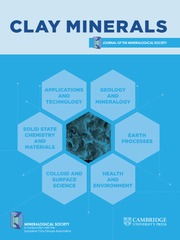No CrossRef data available.
Article contents
Influence of solid–liquid compositions and contact time during maturation on the properties of artificial peloids for use in pelotherapy
Published online by Cambridge University Press: 10 July 2025
Abstract
Peloids are natural therapeutic muds or clays used in balneotherapy and other health treatments. The aim of this study is to prepare and qualify three artificial peloids by maturation for 360 days of some Tunisian smectitic clays with a naturally chlorinated sodic mineral water from a spring in Korbous, Tunisia. This was done to improve our understanding of the behaviour of these clays and the physicochemical changes that affect the clays during maturation, with the purpose of providing suitable raw materials as a solid phase for peloid preparation. The results showed that parameters such as mineralogy, geochemistry, granulometry, cation-exchange capacity, consistency parameters (Atterberg limits and plasticity index), specific surface area, cooling kinetics and pH are all affected by the geochemistry of the thermal water used during maturation. Mineralogical modifications mostly concern the clay minerals’ contents, particularly smectite, and subordinately the dissolution of gypsum and the neoformation of halite. The observed improvements to the plasticity index and cooling kinetics can be explained by the ability of water molecules, and especially cations, to diffuse into the clay particles. The main exchangeable cations are Na+ and Ca2+, along with Mg2+ and K+, which promote swelling and increase water retention and consequently retention of heat in thermal spa treatments. The chemical composition of the major elements is closely linked to the mineralogical compositions of the clays, and also to the chemical composition of the thermal water used in their maturation. The safety profiles of the peloids obtained at different maturation times were evaluated, particularly regarding their content of potentially toxic elements such as arsenic.
Keywords
Information
- Type
- Article
- Information
- Copyright
- © The Author(s), 2025. Published by Cambridge University Press on behalf of The Mineralogical Society of the United Kingdom and Ireland.

